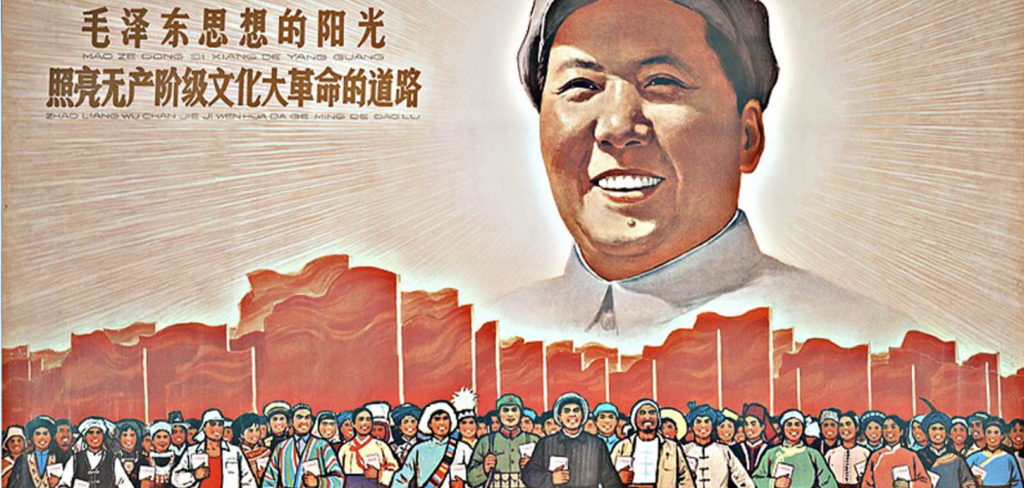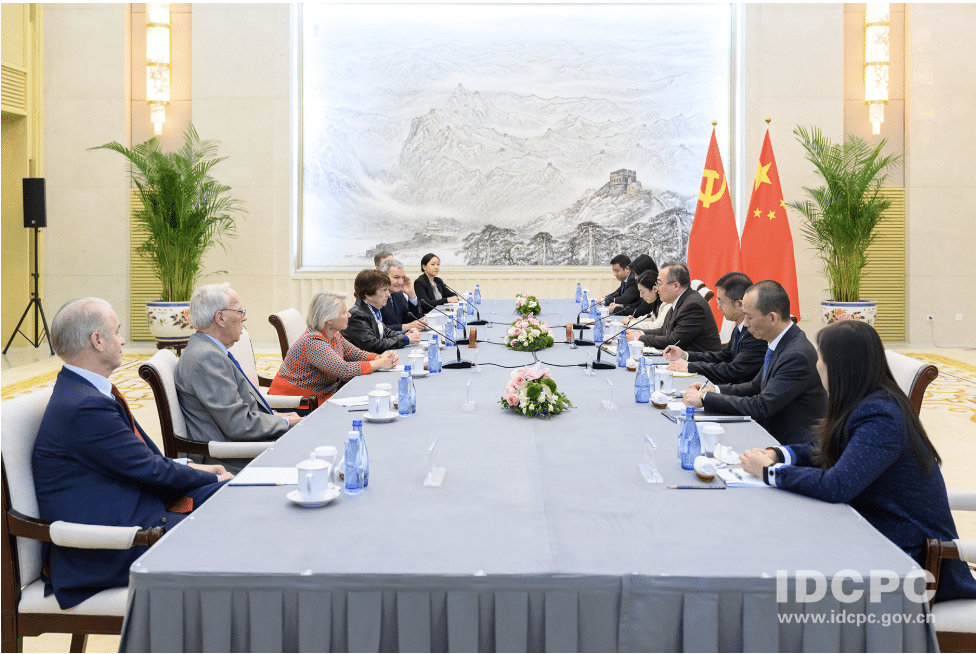Seeking Common Ground: US-China Arms Control in Outer Space
By Raphael J. Piliero.
The views expressed are his own and do not necessarily represent the views of The Carter Center or its associates.
For decades, policy experts in both the United States and China have recognized the dangers of space weaponization and the associated risk of creating space debris. In 2007, an anti-satellite (ASAT) test by China resulted in hundreds, if not thousands of pieces of debris, followed by international outcry. Successive tests by the US in 2008 (under the pretenses of shooting down a failing satellite) raised similar concerns—while they did not create extensive debris, many worried the two were entering into an arms race.
However, concerns are not simply limited to ASAT testing, which typically involve ground-to-space weaponry. Instead, many have expressed concern about the placement of weapons in space itself. In particular, China led the 2008 push for the Prevention of the Placement of Weapons Treaty (PPWT), which would bar nations from placing space weapons in outer space.
Here, agreement breaks down—despite shared concern about space weaponization, the US and China have been unable to find common ground. The US rejected the PPWT out of hand, with the State Department claiming that the proposal was essentially unverifiable with no inspection regime nor any clear means of defining “space weapons.” However, intransigence wasn’t limited exclusively to the US – that same year, the European Union proposed a “Code of Conduct” for space, outlining principles for responsible behavior. Yet, China rejected the Code, arguing that a non-binding set of principles would merely detract from efforts to create a binding accord such as the PPWT.
What explains these disagreements? In particular, what animated US distrust (and Chinese support) for the PPWT, and the reverse for the Code of Conduct? This article will explore the basis for these negotiating breakdowns, and whether the two have principled disagreement, or are merely reticent to agree to proposals from the other.
Differing Objectives:
To understand US objectives in space arms control, one must understand the purpose that space serves for American military and civilian objectives. Satellites located in space have for decades been critical, such as the Global Positioning System (GPS) serving as the eyes and ears of the American military. During the Gulf War, Operation Desert Shield and Desert Storm relied critically on GPS for position, navigation, timing, missile defense, signals intelligence, and weather data. This enabled sophisticated, modern warfare, from rapid delivery of munitions to precision-guided missiles and gravity bombardment.
However, the result has been the creation of, in the eyes of American adversaries, an “asymmetric vulnerability” in space. Access to space underpins our military dominance, creating a structural incentive for adversaries to attack us in space to hamper the US military. These fears crystallized in 2001, when Donald Rumsfeld warned of the possibility of a “space pearl harbor” due to US dependence on space, urging the country to further weaponize space, and deny access to other states.
Concern about this asymmetric vulnerability is what motivates US arms control efforts: acceptable restrictions will make it challenging for adversaries to use ground-launched ASATs that target American satellites. The Code of Conduct, with its restrictions on debris-producing events, would suffice to protect those American interests.
However, Chinese goals diverge, as they lack the reliance on satellites that would constitute an asymmetric vulnerability. In contrast, Chinese military writings indicate they may prefer to leave open the possibility of striking American satellites, with Dean Cheng noting they may view a strike against the “soft underbelly” of the United States as “irresistible.” Over time, there remains the possibility that this dynamic could change – China’s rival to GPS, Beidou, has been launched, offering China the chance of autonomy from the American-run GPS. However, such autonomy carries the risk of creating Chinese civilian and military dependence on satellites, just as the US has with GPS. Yet, the reliance interests in space still seem to tilt towards the US – Beidou remains with fewer users and in a stage of less integration than GPS at this stage.
In contrast to their hesitation in restricting ground-launched ASATs, China has indicated they fully support restricting weapons placed directly in space. China’s nuclear force is small, and designed primarily to absorb a first strike and retaliate, bound by a “no first use” pledge. As such, their primary concern is ensuring they possess a second-strike capacity against the US. To Chinese planners, this makes American ballistic missile defense (BMD) a serious concern – it may allow an American first strike, with BMD mopping up the remaining missiles.
American BMD has well-known shortcomings, and some argue that China fears missile defense could be placed in space, creating an impenetrable missile defense layer. The PPWT would prohibit the placement of weapons in space, which could be construed to limit missiles based in space. The US, prioritizing future military flexibility, would prefer to leave open the possibility of a missile defense layer in space. Additionally, recent efforts by the US likely haven’t quelled concerns from China – the establishment of the American “Space Force,” an attempt to centralize space authorities within a single branch, has been seen as the first step towards weaponization of space in opposition to China.
Beyond the military needs of both nations, there also remain areas of divergence in strategic culture that contributes to the inability to find common ground. For decades, transparency has been the sine qua non of American arms control and cooperation, from the inspection regime of New START to threat hotlines established during the Cold War with the Soviet Union. However, while the US views transparency as an end in itself, Chinese planners may have less faith in it, viewing transparency as always benefitting the stronger party by removing uncertainty. This is supported by China’s past practice with confidence-building measures, such as how Chinese threat hotlines with Japan, Vietnam, and South Korea have gone dead in crises.
Indeed, some writings suggest that China may even use transparency opportunistically, to gain an advantage in negotiations. Sun Tzu, in The Art of War emphasized instead the importance of a surprise attack hidden behind transparency, where one “lures the tiger to leave the mountain” under the pretense of cooperation. In practice, this may result in diplomatic overtures that won’t be honored. Cheng argues that the policymakers in the Foreign Ministry who make proposals typically are not members of the Politburo, and have little say in what policies ultimately get adopted. The result may be a situation where the Foreign Ministry supports one set of confidence-building measures, while the People’s Liberation Army has no intent to follow them.
This disjunction between what policies are proposed and actually followed is reflected in past space activities. Jeff Keuter observes that while China’s diplomatic corps were challenging supposed US weaponization of space diplomatically, China continued to test new weapons.
Lawfare in the United Nations:
It seems clear that the two nations have disagreements when it comes to both military objectives and the value of transparency in arms control. However, the possibility also remains that even if the two could find agreement, both may be playing hardball diplomacy to achieve the maximally beneficial deal. Michael Listner, attorney and the founder and principal of Space Law and Policy Solutions, argued that the real “battle for primacy” isn’t occurring on the battlefield, or even in space itself. Rather, it occurs in the halls of the United Nations, where the US and China are engaged in a strategy of lawfare. This “lawfare” is the attempt to fashion international law to constrain the adversary. Such tactics exist in more traditional arms control fora as well. While the US desires Chinese participation in traditionally bilateral US-Russian arms control conversations, China has held out in an attempt to convince both parties to shrink their arsenals first.
This approach has a pedigree in both Chinese and American strategic culture. In “The Art of War,” Sun Tzu claimed that “…the supreme art of war is to subdue the enemy without fighting.” Similarly, writings by Colonel Charles Dunlap, Jr., introduced the concept of lawfare, where he argued that international law could stymie US military interventions; this necessitated the US working to craft more equitable constraints on warfare that would allow the military to operate effectively.
In space, the basis of a potential lawfare strategy requires little imagination. Under a slanted, inequitable arms control treaty or set of principles, the adversary faces a Catch-22: either they assent to the proposal (giving up a military advantage), or they oppose it, and appear intransigent, resulting in a loss of credibility.
If lawfare is ongoing now, China appears to be winning. For decades, China has been supporting a negotiating mandate in the UN for the Proposed Prevention of an Arms Race in Space (PAROS) Treaty, against US objections. Following the US refusal of the PPWT, China has been able to paint the US as disinterested in progress on arms control. The result is a soft power bonanza for China. The US is seen as a perpetual naysayer, and if conflict were to emerge in space, the US may very well need to worry about being seen as the less reputable and reliable actor.
What Can Be Done?
Clearly, the US and China remain at an impasse. Arms control measures have been stymied for years, and both nations may be adopting hedging strategies, where developing weapons becomes a safeguard in case diplomacy continues to fail. The result is a lose-lose, where both nations face risks to their assets in space.
The first step is for the US to become a proactive player in the diplomatic area, changing its chorus of “No’s” into something proactive. While the Trump Administration has taken unilateral steps (such as the establishment of a Space Force), there hasn’t been progress in diplomatic arenas, where China has had the last word. Going alone is no substitute—even if the US were to decide to claim military control over space, the prohibitively expensive task of launching the requisite materials and defending them continually would be insurmountable.
Furthermore, even if China doesn’t agree with US proposals, the mere act of creating proactive diplomacy and forcing a rejection from China would restore credibility to the US as a good-faith negotiator, and demonstrate a willingness to put forth serious proposals. The US, in official statements, has been hesitant to even admit there is a problem with regards to weaponization, and this would force a more sober examination of the problem.
Yet, there may be room for common ground. US acknowledgment of the risks space-based BMD might pose to Chinese interests could caution in favor of agreements to limit deployment, provided China would cease testing ground-launched ASATs that create risks for American interests.
Challenges will remain, however. The “Wolf Amendment” on the 103rd page of the House Appropriations bill bars US-Chinese cooperation in space due to human rights concerns, a symbol of US unwillingness to work collaboratively with Chinese counterparts in space. Indeed, recent successes by China in space have highlighted what many claimed from the outset. The Wolf Amendment’s attempt at containment has not gone as planned. China’s Chang’e-4 Lunar Landing on the far side of the Moon demonstrated that they can succeed in spite of US attempts to withhold cooperation. Some in the US, such as Jeff Foust, argue that the status quo’s containment cannot continue. The US cannot hope to successfully stymie Chinese space missions, but only risks creating a set of nations that gravitate towards alliances with China, excluding the US.
To build trust, one approach may be to start small. While arms control has stalled, China has repeatedly expressed interest in smaller acts of cooperation in the space domain. A 2011 joint statement by Presidents Obama and former Chinese President Hu Jintao emphasized potential areas for cooperation where the two nations can find mutual interest. One area of cooperation proposed by Brian Weeden would be sharing environmental and space weather data obtained in space. Such data would be relatively uncontroversial, and a way to begin building a rapport with China. Indeed, some small cooperation took place after China’s successful lunar landing, which illustrates the ways the two nations can build up towards greater cooperation in the future.
Yet, actions in space cannot be divorced from the broader context of US-China relations, and the direction taken by President Trump or a potential President Biden will surely dictate the extent to which cooperation and diplomacy can succeed. There remains the possibility that relations with China could deteriorate, due to any number of possible causes. However, even within hostile relationships, diplomacy has flourished. Whether it was the creation of the INF Treaty in the throes of the Cold War or continued cooperation in the International Space Station, the US demonstrated the ability to work with Russia despite tensions. Perhaps with China, the same can be true.
Raphael J. Piliero is a senior at Georgetown University pursuing a bachelor’s degree in Government. He has also written publications on domestic political issues for outlets such as Political Wire, and previously served as a legislative intern for the chairman of the House Foreign Affairs Committee. A member of the Georgetown Policy Debate Team, he and his partner were a top 16 team in the nation in 2020.
The views expressed are his own and do not necessarily represent the views of The Carter Center or its associates.








